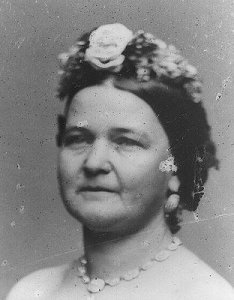
British Queen Victoria and Prince Albert, 1861
Queen Victoria was devastated by the death of her husband Prince Albert in December, 1861.* She mourned him for the rest of her life, forty full years, wearing only black and virtually becoming a hermit.
The following passage describes the extreme measures the Queen took to preserve her royal consort’s memory. This scene takes place in Windsor Castle on the day after Albert has died of (possibly) typhoid fever. Albert’s body lies in state for visitation:
On the first morning of her widowhood, she went into the Blue Room to gaze upon her beloved husband’s features. Warned by her doctors not to kiss them, she kissed his clothes instead. She had every part of the room photographed so that it could be preserved exactly as it had been at that moment of the night, ten minutes to eleven on 14 December 1861, when her own life had been shattered….
Bust of Prince Albert, Minton & Co. from the original sculpture portraits by Carlo Marochetti (1805 - 67), England, Original sculpture 1851, made 1862.
She gave orders for Albert’s dressing gown and fresh clothes to be laid each evening on his bed and for a jug of steaming hot water to be placed on his washstand. Between the two beds in the room a marble bust of him was placed; above it she had his portrait hung, wreathed with evergreens; and almost every day fresh flowers were strewn beneath it on the pillows. The glass from which he had taken his last dose of medicine was kept on the table beside it where it remained for more than forty years. On his writing table his blotting book lay open with his pen upon it as though it were waiting for him to pick up. Guests at Windsor were required to write their names in his visitors’ book as well as in the Queen’s, ‘as before’….She had herself photographed gazing up at his bust; and she went to bed each night clasping one of his nightshirts and with a cast of his hand close enough for her to touch it with her fingers. (1)
*See a related post on this blog, “Mary Lincoln Goes Goth,” and read how Queen Victoria got her notorious nickname, “Mrs. Brown.”
(1) Hibbert, Christopher. Queen Victoria: A Personal History. (New York: Basic Books, 2000)





















